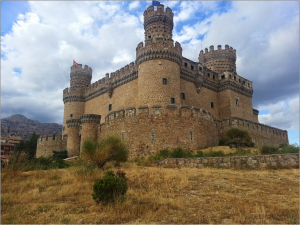The Lure of Madrid

An ancient city, Madrid goes far back into the past than any other contemporary city that is still in existence. Some form of community has existed on the site of modern Madrid since before history was recorded. The Romans built villas in the area, the Visigoths tombs and churches, but the first recorded history of the city of Madrid begins with the Moors who conquered most of Spain during the 9th century.
During the Moorish conflicts a fortress was constructed near the river Manzanares to protect the Moorish kingdoms from invasion by the Christians of Western Spain. In 1085 AD the fortress and the city that had sprung up around it were conquered by the Christian kingdom of Castile. Over the centuries the importance of Madrid resulted in an increased number of people, power and prestige.
The Spanish Constitution of 1931 set Madrid as the capital of Spain. Over the ensuing 80 years, the city became the center of Spanish wealth and influence. In modern Spain, Madrid has become the most populous city as well as the nation’s capital.
When planning a trip to Madrid most tourists will have to make some tough decisions on what to see and what to skip. The confluence of Christian and Muslim history combined with the rise of Spanish power during the Middle Ages and Age of Exploration have given the city a rich history that would take years to explore fully. Time constraints modern tourists have will prevent the majority from even scratching the surface of this wonderful and historic city.
● The Royal Palace. Designed to rival France’s Versailles, the Royal Palace was commissioned in the 18th century and remains a triumph of Neoclassical architecture. In addition to many other wonders, the Royal Palace includes the Spanish Throne Room which is still used for state ceremonies and the Royal Armory containing over 3,000 exhibits spanning the history of historic Spain.
● Puerta del Sol. Puerta del Sol is known as the ‘Heart of the City,’ and is the nexus for public transportation in Madrid. In addition to having been the site of many historic events, including the proclamation of the Second Republic in 1931, Puerta del Sol is a thriving and vibrant market and meeting place for modern inhabitants of and visitors to Madrid.
● Museo del Prado. The Prado Museum is one of the greatest art museums in the world. The number of paintings it contains rivals the Louvre in Paris for it has 140 incredible works by Francisco de Goya. The bulk of the museum is composed of artwork from the 12th to the 19th century and includes many well-known masterpieces. Art lovers shouldn’t skip the Prado.
● Museo Arqueológico Nacional. This museum, founded by Queen Isabella in 1867, is one of Spain’s national treasures. Including exhibits that span the known history of the Mediterranean, the National Archeological Museum is an overwhelming starting point for understanding the confluence of cultures and history that make up modern Spain. Everything from Ancient Egyptian mummies to artifacts of the Roman Empire through the Islamic influence of the Moorish conquests is contained in this incredible museum.
This list just barely scratches the surface of what can be seen and done in Madrid. Concentrating on the wealth of historical sights leaves other tourist activities off the list, but just if you decide to walk, take a bus or book taxi Madrid to wander around the city will allow you to witness the wonder of this city from a casual explorer’s perspective.

